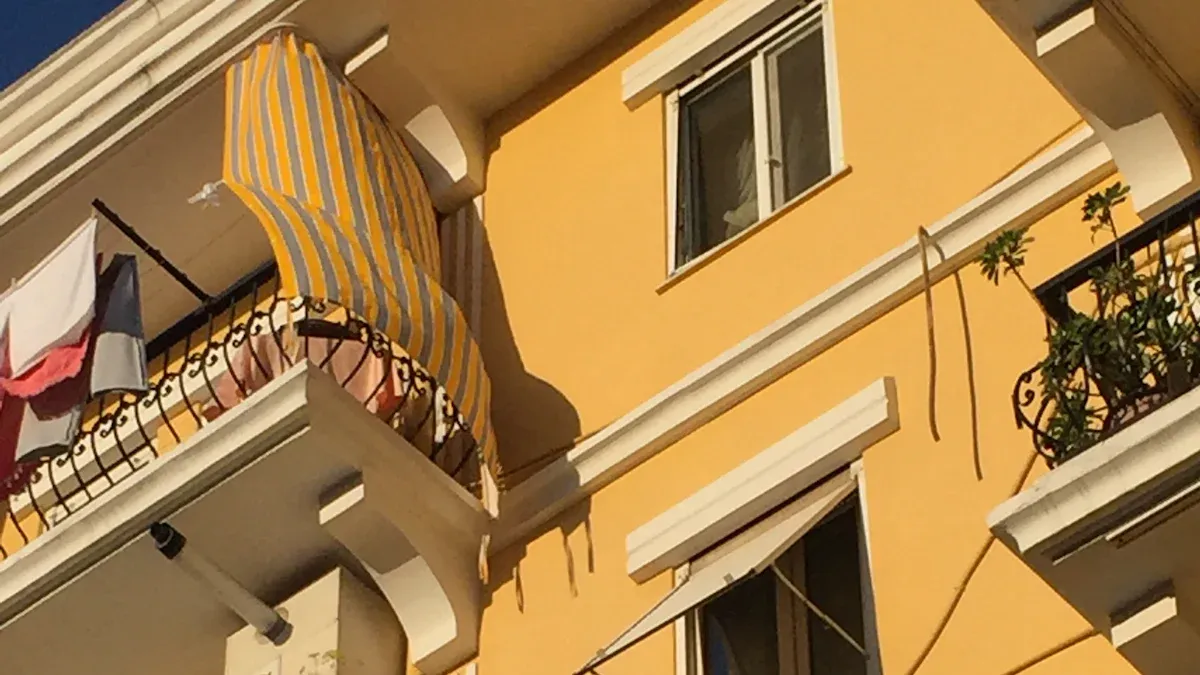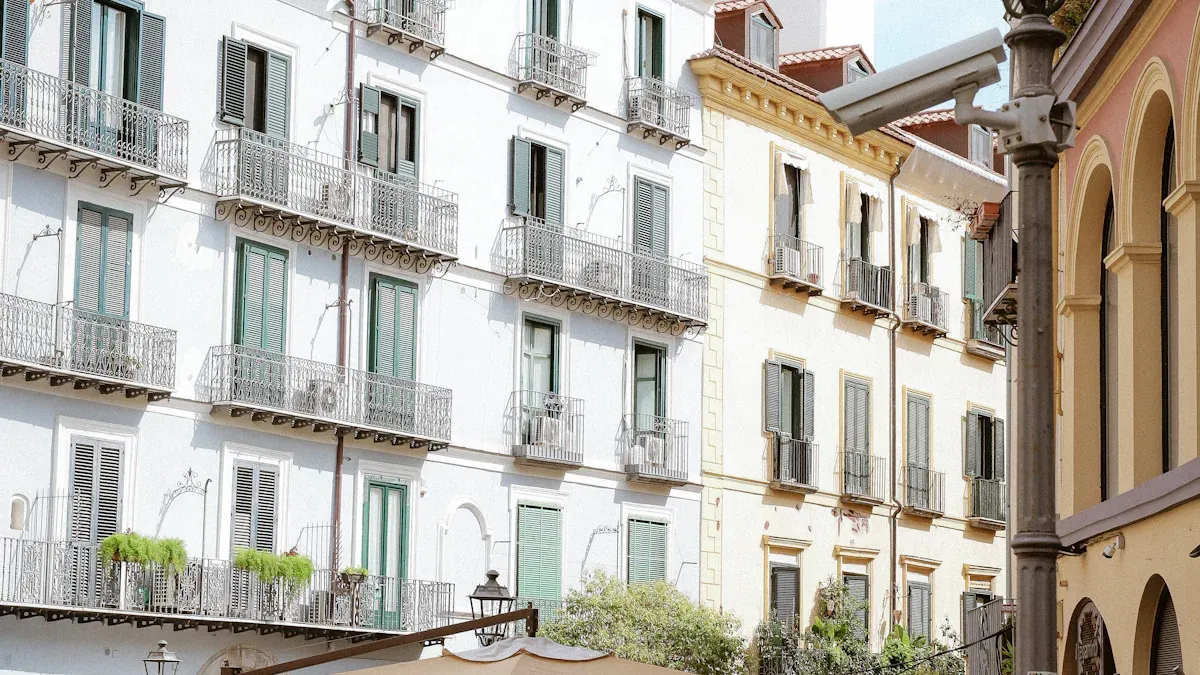- EasyCard
- Trade
- Help
- Announcement
- Academy
- SWIFT Code
- Iban Number
- Referral
- Customer Service
- Blog
- Creator
Step-by-Step Guide for Americans Renting in Italy in 2025

Image Source: pexels
Yes, you can rent in Italy as an American in 2025. If you want to avoid the stress that comes with renting in Italy, you need to know what steps to take. Many Americans worry about proving legal residency, showing enough income, and dealing with paperwork when renting or buying property as a foreigner. You might need to get an Italian tax code, handle translations, and watch out for scams. Landlords sometimes see Americans as having bigger budgets, so rent can go up. Make sure you understand your contracts, check the property’s condition, and avoid cash payments before signing anything. Renting in Italy often feels tricky, but you can make it work.
Key Takeaways
- Americans can rent in Italy for short or long stays but must follow specific visa and residency rules for stays over 90 days.
- Gather essential documents like a valid passport, Italian tax code (codice fiscale), proof of income, and residence permit before renting.
- Use trusted websites or real estate agents to find rental homes and always visit properties in person to avoid scams.
- Understand different rental contract types and carefully review all contract details before signing to protect your rights.
- Prepare for upfront costs like deposits and agency fees, set up utilities and an Italian bank account early to ensure smooth payments.
Renting in Italy: The Basics
Who Can Rent
If you are an American or one of many expats looking to start renting in Italy, you will find that the process is open to most foreigners. You can rent a property in Italy for short or long stays, but the requirements change based on how long you plan to stay. For short visits under 90 days, you do not need a visa. Many expats and travelers choose this option for vacations or short-term work. Renting in Italy for a few months is simple, and you can sign a lease without much paperwork.
For longer stays, things get more detailed. Americans and other expats who want to rent for more than 90 days must follow extra steps. You need to prove legal residency. Landlords often ask for proof of income, a valid passport, and sometimes a guarantor. Renting in Italy as an American means you may also need to show health insurance and enough funds to cover your rent and living costs. Expats should expect to pay a deposit, usually equal to one to three months’ rent.
Visa and Residency
If you plan to stay in Italy for more than 90 days, you must get a long-stay visa (Type D visa) before you arrive. After you land, you have eight days to apply for a residence permit (permesso di soggiorno). This step is key for all expats and Americans renting a property in Italy for the long term. Here is a quick look at the main visa types that allow you to rent:
| Visa Type | Who Can Apply | How Long You Can Stay | Notes on Renting in Italy |
|---|---|---|---|
| No Visa Required | Short-term visitors | Up to 90 days | Rent freely for short stays |
| Student Visa | Students | Varies | Rent during your studies |
| Work Visa | Employees | Long-term | Rent while working in Italy |
| Self-Employment Visa | Freelancers, business owners | 2 years, renewable | Rent after getting special approval |
| Digital Nomad Visa | Remote workers | Varies | Rent as a remote worker |
| Elective Residency Visa | Retirees, passive income | 1 year, renewable | Rent for long-term stays, no work allowed |
| Family Reasons Visa | Family reunification | Varies | Rent to join family in Italy |
| Investor Visa | Investors | 2 years, renewable | Rent after making a qualifying investment |
After you get your visa and arrive in Italy, you must register with the local municipality. You will need your residence permit, passport, Italian tax code (codice fiscale), and your lease. Expats renting in Italy should keep all documents ready. The local police may check your address. Renting in Italy as an American or expat is possible if you follow these steps and stay organized.
Essential Documents
Before you start looking for a place to live, you need to gather the documents you need to rent a home in italy. Landlords and agencies want to see that you have everything in order. If you miss a document, you might lose your chance at a great apartment. Here’s what you’ll need as an American or one of the many expats planning to rent in Italy:
Passport and ID
You must show a valid passport or government-issued ID. Landlords use this to confirm your identity and check your visa status. Most expats find that a passport is the easiest option. Always keep a copy handy, both digital and paper, because you’ll need it for almost every step.
Tip: Some landlords may ask for extra identification, like a driver’s license or a second form of ID. Bring more than one if you have it.
Codice Fiscale
The codice fiscale is your Italian tax code. You can’t sign a rental contract without it. Every expat, student, or worker needs this code for legal and financial matters in Italy.
Here’s how you can get your codice fiscale:
- Apply at your local Italian Consulate or Embassy before you arrive. Fill out the form, include a copy of your ID, and state your reason (like renting a home). The process can take over 30 business days.
- If you’re already in Italy, go to the Agenzia delle Entrate office. Bring your passport and a reason for needing the code. You can ask an Italian professional to help if you don’t speak Italian well.
- Some expats choose to give power of attorney to an Italian accountant (Dottore Commercialista) to speed things up.
- Since July 2024, consulates may ask for extra documents, like your birth certificate. Check the latest rules before you apply.
Note: The codice fiscale is free. You need it for rental contracts, opening a bank account, and even getting a phone plan.
Proof of Income
Landlords want to know you can pay the rent. They usually ask for proof of income. This is true for expats, students, and workers. You might need to show:
- Recent pay stubs or employment contracts
- Bank statements showing regular deposits
- Tax returns (Form 730 for employees, Form Unico for freelancers)
- Letters from your employer or HR department
- Enrollment letters if you’re a student
- Social Security or pension statements
Most landlords expect your income to be at least 2.5 to 3 times the monthly rent. If you’re self-employed, bring signed contracts or invoices. Some landlords may call your employer or ask for more than one document. Expats often find that showing a solid bank account and steady income makes the process smoother.
Residence Permit
If you plan to stay in Italy for more than 90 days, you need a residence permit (Permesso di Soggiorno). This is a must for long-term rentals. Here’s what you do:
- Register your address at the local Questura within 8 days of arriving in Italy.
- Get your codice fiscale if you haven’t already.
- Pick up an application kit at the post office (Sportello Amico).
- Fill out the forms and include copies of your passport, lease, proof of health insurance, and a $17 (USD) tax stamp (Marca da Bollo, check the latest exchange rate).
- Submit your application at the post office. You’ll get a receipt that acts as a temporary permit.
- Go to your appointment at the Questura for fingerprinting and document checks.
- Wait for an official to visit your home to confirm your address.
- Pick up your residence permit card when it’s ready.
Note: You need a long-stay visa before you apply for your residence permit. The whole process can take several weeks, so start early.
What Else Might Landlords Ask For?
Some landlords want extra paperwork, especially if you’re an expat. They might ask for:
- References from previous landlords
- Proof of health insurance
- A guarantor (someone who promises to pay if you can’t)
- Extra ID or background checks
Always ask the landlord or agency for a full list before you apply. Being prepared helps you stand out from other expats and makes the process much easier.
Finding a Rental Home in Italy

Image Source: pexels
Property Search
When you look for rental homes in Italy, you have many options. The best way to find a house or apartment is to start online. Many people use websites like immobiliare.it, soloaffitti.it, subito.it, vivastreet.it, mioaffitto.it, casa.it, and idealista.it. These sites list thousands of apartments and houses for rent. If you want a short-term stay, you can check Airbnb, VRBO, and Booking.com. For longer stays, Italian sites often have better deals. Some people also use bed-and-breakfast.it for unique places. If you are searching from outside of Italy, these platforms help you compare prices and locations before you arrive.
Tip: Always check the same rental home in Italy on more than one website. This helps you spot fake listings and compare prices.
Real Estate Agents
You can also work with a real estate agent to find a property to rent. Agents know the local market and can help you with paperwork. They often have access to apartments that are not listed online. If you do not speak Italian, an agent can explain contracts and answer your questions. Keep in mind, agents charge a fee, usually equal to one month’s rent. This fee is paid when you sign the contract for renting a house or apartment.
Viewing and Scams
Before you rent, try to visit the property in person. This is the best way to look for rental homes and avoid problems. Scammers sometimes post fake photos or ask for money before you see the place. Common scams include fake holiday homes and landlords who want you to wire money or pay in cash. Always use secure payment methods and never send money to someone you have not met. If you find a property to rent on social media, check the profile for signs of a scam, like few posts or strange stories.
Note: Trusted websites and real estate agents are the safest way to find a rental home in Italy. If something feels off, walk away and keep searching.
Rental Agreements in Italy
Contract Types
When you start looking at rental agreements in italy, you will see several contract types. Each one fits a different need. Here is a table to help you compare:
| Contract Type | Duration | Best For | Notes |
|---|---|---|---|
| Standard Rental Contract (4+4) | 4 years + 4 years | Long-term stays | Automatic renewal. Six months’ notice to end. Check what costs are included. |
| Temporary Contract (Transitorio) | 1 to 18 months | Expats, students, short-term | Must state a valid reason for short-term rent. Flexible. |
| Agreed-Rent Contract (3+2) | 3 years + 2 years | Affordable rent seekers | Rent set by local rules. Good for cities with housing shortages. |
| Student Housing Contract | 6 to 36 months | University students | Needs proof of enrollment. |
| Free Use Contract | Variable | Friends, family, employer | No rent paid. Tenant pays utilities. Written agreement needed. |
| Subletting Agreement | Variable | Shared housing | Only allowed with landlord’s permission. |
If you want a short-term place, look for a temporary contract. These are popular with students and people who need to stay for less than 18 months. For longer stays, the 4+4 and 3+2 contracts are common. Always check if the contract matches your needs before signing.
Key Clauses
Rental agreements in italy must include some important details. These protect you and the landlord. When you read your contract, look for these key points:
- Names and tax codes of both you and the landlord
- Full address and if the place is furnished or not
- Exact start and end dates of the contract
- Monthly rent amount and what it covers
- Extra costs like utilities or building fees
- Security deposit amount and how you get it back
- Rules for ending the contract, including notice periods
- Who handles repairs and maintenance
- If subletting is allowed
- What happens if there is a dispute
Always ask for a copy of the Energy Performance Certificate (APE). This shows how much energy the home uses.
If you see something you do not understand, ask for help before you sign. Never agree to pay rent in cash without a receipt.
Registration
You must register rental agreements in italy if you stay longer than 30 days. This step makes your contract legal and protects your rights. Here is what you need to know:
- Registration must happen within 30 days of the contract start date.
- Either you or the landlord can register the contract at the local tax office.
- Bring signed copies of the contract, your ID, and the landlord’s details.
- Pay the registration tax. For most contracts, this is 2% of the yearly rent (minimum $73 USD, check the latest exchange rate).
- You can register online or in person. If you do not have an Italian tax code, use Model 69.
- The landlord must tell you and the building manager about the registration within 60 days.
If you want to use the special flat tax (cedolare secca), ask the landlord to choose this option. Registration is a must for all long-term and short-term contracts over 30 days. Skipping this step can cause problems if you need to prove your address or rights as a tenant.
How Much Does Rent Cost in Italy
Average Rent
You probably wonder how much does rent cost in Italy in 2025. The answer depends on where you want to live and the type of housing you choose. Big cities like Rome and Milan have higher prices, while smaller towns and rural areas are more affordable. Here is a table to help you compare the average rent in Italy for different property types in major cities:
| Property Type | Typical Size (sq ft) | Average Rent Range (USD/month) | Notes on Location and Demand |
|---|---|---|---|
| Studio | 320 - 480 | $980 - $1,630 | Most expensive per square foot, popular with young professionals |
| One-bedroom | 480 - 650 | $1,200 - $1,970 | Most common, price varies by neighborhood |
| Two-bedroom | 700 - 915 | $1,750 - $2,520 | Good for families, depends on location |
| Three-bedroom | 860 - 1,290 | $2,190 - $3,830 | Luxury segment, lower price per square foot |
In Rome and Milan, you can expect to pay between $1,150 and $1,400 for a one-bedroom apartment. Florence is a bit cheaper, with rents from $690 to $850. If you look outside city centers, you will find lower prices, sometimes as low as $500 per month.
Tip: Renovated or energy-efficient apartments cost more, especially in popular regions like Tuscany or near the coast.
Deposits and Fees
When you rent a place, you need to pay a security deposit. Most landlords ask for two or three months’ rent as a deposit. This deposit covers any damage to the property. Italian law says the deposit cannot be more than three months’ rent. You get your deposit back at the end of your lease if you leave the apartment in good condition. Sometimes, landlords want the deposit in cash, but many now prefer a bank transfer.
You also pay an agency fee if you use a real estate agent. This fee is usually equal to one month’s rent or about 10% of the yearly rent. The agency fee is separate from your deposit and first month’s rent.
Note: Always check your contract for details about deposits and fees before you sign.
Payment Methods
You have several ways to pay your rent in Italy. The most common method is a bank transfer. Many landlords also accept digital wallets like Apple Pay or Google Pay. Some even accept Bitcoin, but there is a limit of $1,100 every three days. Credit and debit cards work if your landlord uses a digital payment system. Always keep proof of your payments. Avoid paying large amounts in cash, especially before you see the apartment.
Tip: Set up your bank account early so you can pay rent on time and avoid delays.
Applying and Moving In

Image Source: pexels
Application Process
When you find a place you like, the application process in Italy follows clear steps. Here’s what you can expect:
- Ask the agent or landlord about every detail before you agree to anything. They will prepare a rental proposal in Italian.
- Review the proposal carefully. If you have questions, ask right away.
- If you accept, you pay a deposit, usually equal to one month’s rent.
- After a short wait, you sign the formal rental contract and pay the rest of the deposit, which can be up to three months’ rent.
- Make sure the contract matches the proposal. Read it closely before you sign.
- If you need proof of residency for stays longer than 90 days, confirm that the owner will register your contract with the authorities. Some rentals do not allow this, so check before you commit.
Landlords want tenants who pay rent on time and take care of the property. They may ask for proof of income or references. If you are moving to rome or another big city, competition can be high, so have your documents ready.
Negotiation
You can often negotiate the terms of your rent. Try these strategies:
- Show the landlord you understand their costs, like repairs and taxes. This builds trust.
- Share your good history as a tenant. If you always pay rent on time, mention it.
- Offer to stay long-term. Landlords like stable tenants and may lower the rent or improve the lease.
- Gather information about local rent prices. Use this data to support your request for a better deal.
- If the landlord cannot lower the rent, ask for upgrades or repairs instead.
Negotiating helps you get the best value when renting in Italy.
Utilities Setup
After signing your contract, you need to set up utilities. Here’s how you do it:
- Get your Italian tax code (codice fiscale).
- If the previous tenant had active utility contracts, transfer them to your name. This is called a “voltura.”
- If there are no active contracts, start new ones. This is a “subentro.”
- Ask your landlord for help. You will need your details, the previous account holder’s info, and utility codes from old bills.
- Some landlords keep utilities in their name. In this case, you pay them directly.
- Open an Italian bank account to pay bills, since most providers do not accept foreign cards.
- For water, check the meter at move-in and open or transfer the account.
- Apply for the waste disposal tax within 90 days. The amount depends on your city and apartment size.
- Set up internet and phone service. Check which providers are allowed in your building.
After you move in, register your new address with the local municipality. Bring your documents and wait for approval. You will get an updated ID card and access to healthcare.
Renting in Italy as an American is possible if you stay organized and follow each step. Here’s a quick table of common challenges and how you can handle them:
| Challenge | Solution |
|---|---|
| High upfront costs | Budget ahead and negotiate deposits |
| Language barriers | Use agents or property finders for support |
| Unfurnished apartments | Clarify what’s included before signing |
Always double-check your documents and contracts. If you feel unsure, reach out to a lawyer or trusted agency. With these top tips for renting, you can enjoy your new life in Italy with confidence.
FAQ
Can you rent in Italy without speaking Italian?
Yes, you can rent in Italy even if you do not speak Italian. Many landlords and agents speak English, especially in big cities. You can also use translation apps or ask a friend for help during the process.
Do you need an Italian bank account to pay rent?
Most landlords prefer you to pay rent from an Italian bank account. Some may accept international transfers or digital wallets. Setting up a local account makes paying rent and bills much easier.
What happens if you break your lease early?
If you leave before your lease ends, you usually need to give written notice. The notice period is often three to six months. You may lose part of your deposit if you do not follow the contract rules.
Can you rent a furnished apartment in Italy?
Yes, you can find both furnished and unfurnished apartments in Italy. Always check what is included before you sign. Some places only have basic furniture, so ask for a list of items.
Is it possible to rent in Italy while waiting for your residence permit?
You can rent while waiting for your residence permit. Show your visa and proof that you have applied for the permit. Many landlords accept this, but some may ask for extra documents or a higher deposit.
Navigating the complexities of renting in Italy as an American can be daunting, especially when it comes to managing your finances across borders. The need for an Italian bank account and the mention of currency conversions highlight a key challenge: how to move your money from the U.S. to Italy efficiently and affordably. Traditional international transfers can be slow and expensive. This is where BiyaPay simplifies your journey. Our platform offers a seamless solution for converting your USD to EUR, allowing you to handle rent and deposits with ease. With real-time exchange rates and incredibly low remittance fees, starting from just 0.5%, you can save significantly on every transfer.
BiyaPay supports the free conversion of various fiat and digital currencies, providing the flexibility you need. Our rapid registration and same-day delivery service mean you can set up your Italian payments quickly and confidently. Don’t let cross-border financial hurdles slow you down. Check out our Real-time Exchange Rate Calculator to see how much you can save, and make your move to Italy smoother. Register now to get started on your hassle-free international payments.
*This article is provided for general information purposes and does not constitute legal, tax or other professional advice from BiyaPay or its subsidiaries and its affiliates, and it is not intended as a substitute for obtaining advice from a financial advisor or any other professional.
We make no representations, warranties or warranties, express or implied, as to the accuracy, completeness or timeliness of the contents of this publication.




Contact Us
Company and Team
BiyaPay Products
Customer Services
is a broker-dealer registered with the U.S. Securities and Exchange Commission (SEC) (No.: 802-127417), member of the Financial Industry Regulatory Authority (FINRA) (CRD: 325027), member of the Securities Investor Protection Corporation (SIPC), and regulated by FINRA and SEC.
registered with the US Financial Crimes Enforcement Network (FinCEN), as a Money Services Business (MSB), registration number: 31000218637349, and regulated by FinCEN.
registered as Financial Service Provider (FSP number: FSP1007221) in New Zealand, and is a member of the Financial Dispute Resolution Scheme, a New Zealand independent dispute resolution service provider.



















